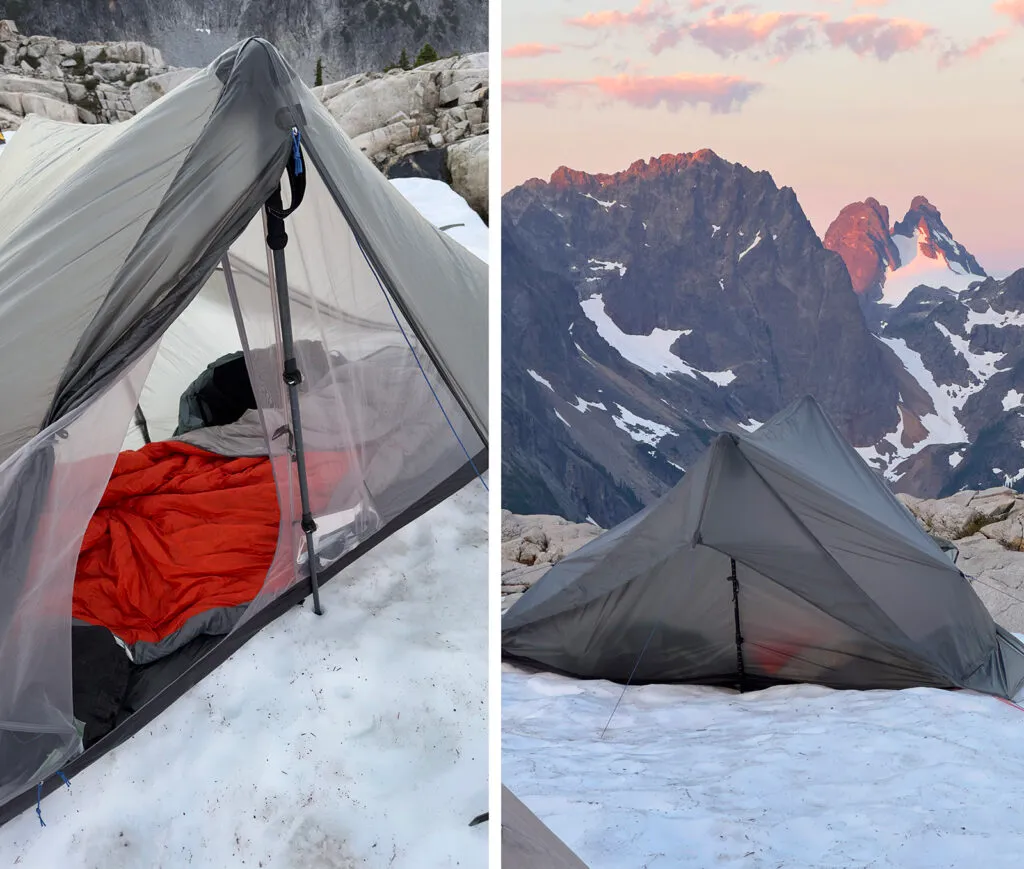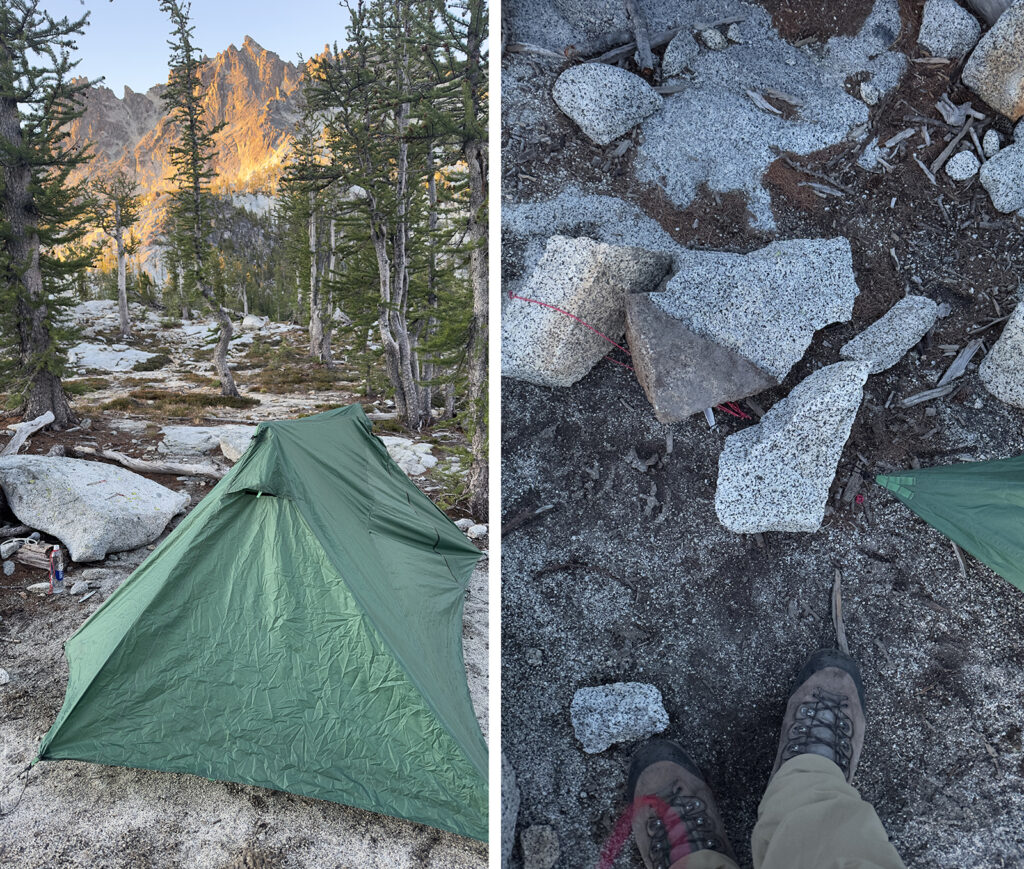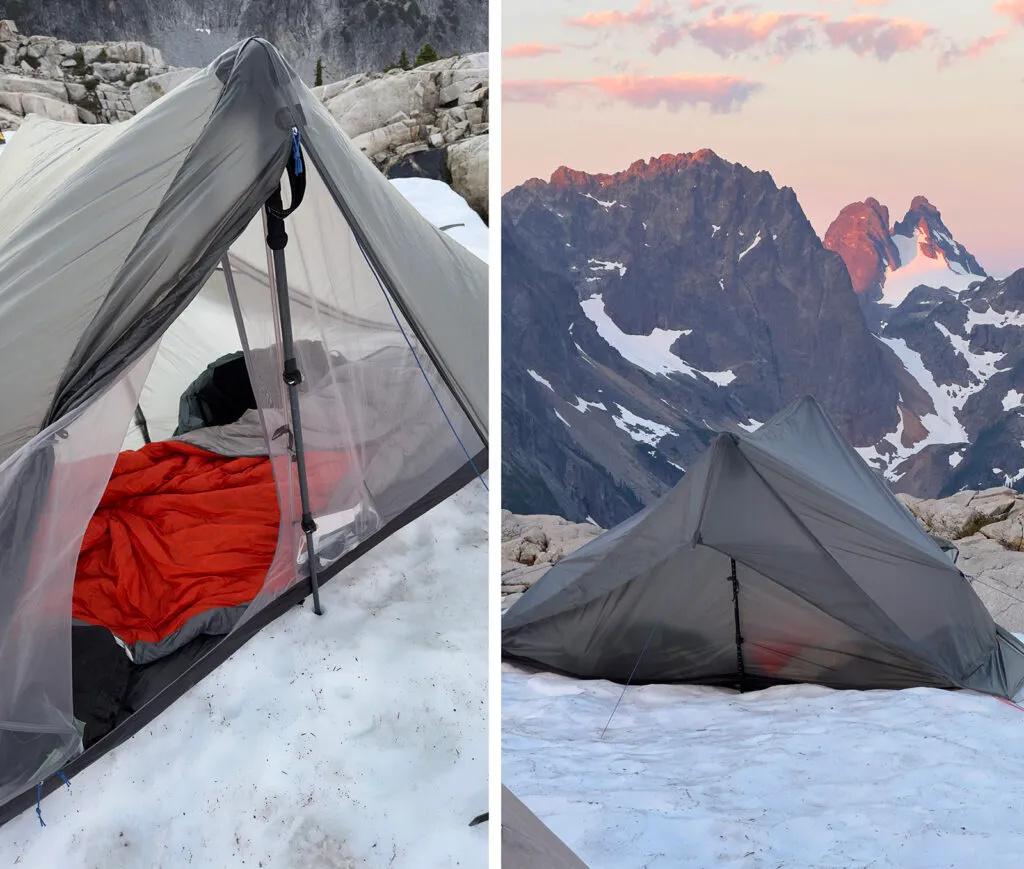
The Ultimate Guide to Trekking Pole Tents: Ultralight Backpacking Revolution
After decades of backpacking across rugged terrains from the Appalachian Trail to remote Patagonian peaks, I've discovered that a trekking pole tent can revolutionize your outdoor experience. This comprehensive guide reveals everything you need to know about these ultralight shelters, from setup secrets I've learned through countless nights in the wilderness to the best trekking pole tent models that have proven their worth in extreme conditions.
What Is a Trekking Pole Tent and Why Choose One?
.webp)
A trekking pole tent represents the pinnacle of ultralight backpacking innovation, utilizing your existing trekking poles as the primary structural support instead of carrying dedicated tent poles. During my first experience with a trekking pole tent on the Pacific Crest Trail, I was amazed by how this simple concept could reduce my pack weight by nearly two pounds while providing superior wind resistance compared to traditional freestanding tents.
The beauty of a trekking pole tent lies in its dual-purpose design philosophy. Your poles serve you during the day for stability and support while hiking, then transform into essential shelter components at night. This elegant solution eliminates redundancy in your gear loadout—a fundamental principle I've embraced throughout my backpacking career. Modern trekking pole tent designs have evolved significantly, featuring advanced materials like Dyneema Composite Fabric that offers exceptional strength-to-weight ratios.
What sets a quality trekking pole tent apart is its engineering precision. Unlike conventional tents that rely on multiple poles and complex hub systems, these shelters achieve structural integrity through strategic guy-line placement and pole positioning. I've weathered fierce mountain storms in my trekking pole tent, watching traditional dome tents struggle while my shelter remained rock-solid. The triangular or pyramid shape naturally sheds wind and precipitation, making it ideal for exposed alpine environments.
The learning curve for transitioning to a trekking pole tent is minimal, but the rewards are substantial. You'll discover that these shelters offer more usable interior space than their weight suggests, with many models providing generous vestibules for gear storage. For serious thru-hikers and ultralight enthusiasts, a trekking pole tent isn't just an option—it's an essential tool that opens up new possibilities for lightweight, long-distance adventures.
Top Benefits of Trekking Pole Tents for Ultralight Backpacking
Dramatic Weight Reduction
Save 1-3 pounds compared to freestanding alternatives
Superior Wind Resistance
Aerodynamic shapes naturally deflect high winds
The most immediate benefit you'll notice with a trekking pole tent is the dramatic weight savings. When I switched from my traditional two-person tent weighing 4.5 pounds to a trekking pole tent at just 1.8 pounds, the difference was revolutionary. This weight reduction translates directly to increased hiking endurance and reduced strain on your joints during long-distance treks. For context, saving two pounds from your shelter weight is equivalent to carrying one less liter of water—a significant advantage on water-scarce sections of trails.
Beyond weight savings, a trekking pole tent offers superior packability. These shelters compress into remarkably small stuff sacks, often no larger than a Nalgene bottle. During my recent expedition through Torres del Paine, my trekking pole tent fit easily into the top compartment of my 40-liter pack, leaving ample space for essential gear. This compact size also provides more packing flexibility, allowing you to distribute weight more effectively throughout your backpack.
The cost-effectiveness of a trekking pole tent extends beyond the initial purchase. Since you're utilizing trekking poles you likely already own, there's no need to invest in expensive pole replacement parts or carry backup tent poles. I've calculated that over five years of intensive use, my trekking pole tent has cost approximately 40% less per night than comparable traditional tents when factoring in durability and replacement costs.
Weather performance is where trekking pole tent designs truly excel. The pyramid or A-frame configurations naturally shed rain, snow, and wind more effectively than complex dome structures. During a particularly brutal storm in the Scottish Highlands, my trekking pole tent remained stable while nearby dome tents struggled with inverted rainflies and bent poles. The single-point tension system distributes stress evenly, creating a remarkably resilient shelter that actually becomes more stable in high winds. For serious backpackers venturing into challenging environments, this reliability advantage makes a trekking pole tent an invaluable safety asset.
Best Trekking Pole Tents: My Top Recommendations
.webp)
After extensively testing dozens of models across various conditions, I've identified the top trekking pole tent options that consistently deliver exceptional performance. My recommendations are based on real-world testing in environments ranging from alpine storms to desert heat, ensuring each trekking pole tent meets the demanding standards of serious ultralight backpackers.
3F UL Gear Lanshan 2 Pro - Best Value
This exceptional trekking pole tent offers premium features at an incredibly accessible price point. Weighing just 2.3 pounds for a two-person shelter, the Lanshan 2 Pro has been my go-to recommendation for budget-conscious hikers who refuse to compromise on quality.
Featherstone Backbone 2P - Premium Choice
For hikers seeking the ultimate trekking pole tent experience, the Backbone 2P delivers unmatched build quality and weather protection. Its innovative design has accompanied me through some of my most challenging expeditions, never failing to provide reliable shelter.
NightCat Ultralight 1-Person - Solo Adventure
This lightweight trekking pole tent is perfect for solo adventurers who prioritize minimal weight without sacrificing comfort. Despite its compact size, it offers surprising interior space and excellent weather protection for single-person expeditions.
Each recommended trekking pole tent has undergone extensive field testing in diverse conditions. The key factors I evaluate include setup complexity, weather resistance, interior livability, and long-term durability. These models represent the best balance of weight, performance, and value available in today's market. For additional shelter options, you might also consider exploring other backpacking tent alternatives that complement ultralight setups.
TETON Sports Mountain Ultra 1-Person - Reliability Champion
For hikers who prioritize proven reliability above all else, this trekking pole tent delivers consistent performance across all conditions. Its robust construction and thoughtful design details make it ideal for extended wilderness expeditions where failure isn't an option.
When selecting your first trekking pole tent, consider your specific hiking style and typical conditions. Solo hikers will appreciate the weight savings of single-person models, while couples or hiking partners should examine two-person options carefully for adequate space. Remember that a quality trekking pole tent is an investment that will serve you for thousands of miles if properly maintained and cared for during your adventures.
How to Set Up Your Trekking Pole Tent Like a Pro
Professional setup techniques for trekking pole tents in various conditions
Mastering the setup of your trekking pole tent transforms what initially seems complex into a streamlined process that takes under five minutes. Through years of practice across diverse terrains, I've developed a systematic approach that ensures perfect pitch every time, regardless of conditions. The key is understanding that a trekking pole tent requires more precision than traditional shelters, but this attention to detail pays dividends in performance and stability.
My Proven 8-Step Setup Process
- Site Selection: Choose level ground with good drainage, avoiding low spots where water might collect
- Footprint Placement: Position your groundsheet or tent footprint with proper orientation to prevailing winds
- Corner Staking: Secure the four corners first, creating your base rectangle with appropriate tension
- Pole Insertion: Insert trekking poles into designated grommets or pockets, adjusting height as needed
- Peak Tension: Raise the shelter by extending poles, creating initial structure and shape
- Guy-line Adjustment: Fine-tune all guy-lines for optimal tension and weather resistance
- Final Inspection: Check all stake points and adjust as necessary for perfect pitch
- Interior Setup: Arrange sleeping system and gear for optimal comfort and organization

The most critical aspect of trekking pole tent setup is achieving proper tension. Unlike freestanding tents that rely on poles for structure, your trekking pole tent depends on balanced tension between stakes, guy-lines, and pole height. I've learned that slightly under-tensioning initially, then gradually tightening each point in sequence, creates the most stable and weather-resistant pitch. This technique prevents over-stressing any single point and ensures even load distribution.
Weather-specific setup modifications can significantly improve your trekking pole tent performance. In high-wind conditions, I stake out all available guy-lines and lower the overall profile by reducing pole height slightly. For rain-heavy environments, ensuring proper rainfly drainage and avoiding contact points between fly and inner tent becomes crucial. These advanced techniques separate experienced trekking pole tent users from novices and can mean the difference between a comfortable night and a miserable experience.
Practice makes perfect when it comes to trekking pole tent setup. I recommend practicing in your backyard during various weather conditions before heading into the wilderness. Time yourself and work on reducing setup time while maintaining quality. This preparation pays enormous dividends when you arrive at camp exhausted after a long day or when weather conditions are challenging. A properly pitched trekking pole tent becomes a sanctuary that enhances rather than complicates your outdoor experience. For those interested in other ultralight options, you might explore three-person Naturehike tents for group adventures.
Trekking Pole Tent vs Freestanding Tent: The Ultimate Comparison

The debate between trekking pole tent and freestanding designs has sparked countless campfire discussions among backpackers. Having used both extensively across different terrains and conditions, I can provide insights that go beyond theoretical comparisons to real-world performance differences that matter when you're miles from civilization.
Trekking Pole Tent Advantages
- Significantly lighter weight (1-3 lbs savings)
- More compact when packed
- Better wind resistance and stability
- Lower cost per ounce of protection
- Dual-purpose pole utilization
- Superior weather shedding geometry
Freestanding Tent Benefits
- Faster, simpler setup process
- Works on any surface type
- More predictable interior space
- Easier for beginners to master
- Multiple entry/exit configurations
- Less ground preparation required
The weight difference between a trekking pole tent and comparable freestanding shelter is often dramatic. During my 2,650-mile Pacific Crest Trail thru-hike, switching to a trekking pole tent eliminated 2.2 pounds from my base weight—equivalent to carrying 1,200 fewer pounds over the entire trail distance. This weight savings translates directly to reduced fatigue, faster hiking speeds, and decreased wear on joints and muscles during extended expeditions.
Setup complexity represents the primary learning curve when transitioning to a trekking pole tent. While freestanding tents offer plug-and-play simplicity, mastering your trekking pole tent setup requires practice and understanding of tension dynamics. However, this initial investment in learning pays dividends through improved weather performance and the satisfaction of efficiently deploying a precisely tuned shelter system. I've found that most hikers become proficient within 3-5 setup sessions.
Terrain adaptability differs significantly between these shelter types. Freestanding tents excel on hard surfaces like rock slabs or wooden platforms where staking is impossible. Conversely, a trekking pole tent requires adequate staking points but offers superior performance in challenging weather conditions. During harsh alpine storms, I've observed that the aerodynamic profile of a trekking pole tent provides better stability than complex dome structures that present larger wind profiles.
Cost considerations extend beyond initial purchase price. A quality trekking pole tent typically costs 20-40% less than comparable freestanding shelters while offering superior durability due to simpler construction and fewer failure points. Replacement parts are minimal—essentially limited to stakes and guy-lines—compared to complex pole assemblies and hub systems in freestanding designs. For budget-conscious ultralight enthusiasts, a trekking pole tent represents exceptional value that improves with experience. Those considering alternatives might also explore four-person Naturehike tent options for family camping scenarios.
Essential Tips for Buying Your First Trekking Pole Tent
Selecting your first trekking pole tent requires careful consideration of multiple factors that will determine your satisfaction and performance for years to come. After helping dozens of hikers choose their ideal trekking pole tent, I've identified the critical decision points that separate excellent purchases from regrettable mistakes.
Critical Sizing Considerations
The most common mistake when buying a trekking pole tent is underestimating space requirements. Unlike freestanding tents with vertical walls, these shelters feature sloped sides that reduce usable interior volume. I recommend testing floor dimensions with your actual sleeping pad and gear before purchasing.

Material selection significantly impacts your trekking pole tent performance and longevity. Premium fabrics like Dyneema Composite Fabric (DCF) offer superior strength-to-weight ratios but command higher prices. For most hikers, quality silnylon or polyester fabrics provide excellent durability at more accessible price points. I've used both extensively and found that proper care matters more than fabric type for long-term reliability.
Essential Accessories for Your Trekking Pole Tent
- Quality Stakes: Invest in titanium or ultralight aluminum stakes for reliable anchoring
- Groundsheet: Protect your tent floor and extend its lifespan with a custom footprint
- Repair Kit: Carry basic repair supplies including fabric patches and seam sealant
- Guy-line Upgrades: Replace stock cordage with reflective, high-strength alternatives for better visibility
Budget planning for a trekking pole tent should extend beyond the initial shelter cost. Factor in accessories, potential modifications, and long-term maintenance costs. A complete trekking pole tent system—including shelter, stakes, groundsheet, and accessories—typically costs 15-25% more than the tent alone. However, this total investment remains significantly less than comparable freestanding alternatives while providing superior performance characteristics.
Seasonal considerations influence trekking pole tent selection more than many realize. Three-season models prioritize weight savings and ventilation, while four-season designs emphasize weather resistance and structural integrity. I recommend starting with a high-quality three-season trekking pole tent unless you regularly encounter severe winter conditions. The versatility and weight advantages make them suitable for 90% of backpacking scenarios.
Before finalizing your trekking pole tent purchase, verify compatibility with your existing trekking poles. Most models accommodate standard pole diameters, but some require specific measurements or accessories. I learned this lesson early when my first trekking pole tent required pole modifications that could have been avoided with better research. Modern designs have largely eliminated these compatibility issues, but verification remains wise practice. For those exploring other shelter options, consider checking out Naturehike hot tent alternatives for cold-weather camping scenarios.
Conclusion
Embracing a trekking pole tent represents more than just gear optimization—it's a philosophy shift toward minimalism, efficiency, and deeper connection with the natural world. Throughout my extensive testing and real-world application of these remarkable shelters, I've discovered that a quality trekking pole tent becomes an extension of your hiking system rather than just another piece of equipment to carry.
The transformation in your hiking experience begins immediately. The weight savings alone will rejuvenate your legs during long ascents, while the compact pack size opens up new possibilities for gear organization and load management. But beyond the quantifiable benefits, a trekking pole tent develops your outdoor skills, requiring attention to detail and environmental awareness that makes you a more competent and confident backcountry traveler.
Whether you're planning your first overnight backpacking trip or preparing for a months-long thru-hike, investing in a quality trekking pole tent will enhance every aspect of your outdoor adventures. The models I've recommended have proven themselves across thousands of miles and countless challenging conditions, offering the reliability and performance that serious hikers demand.
Ready to revolutionize your backpacking experience?

